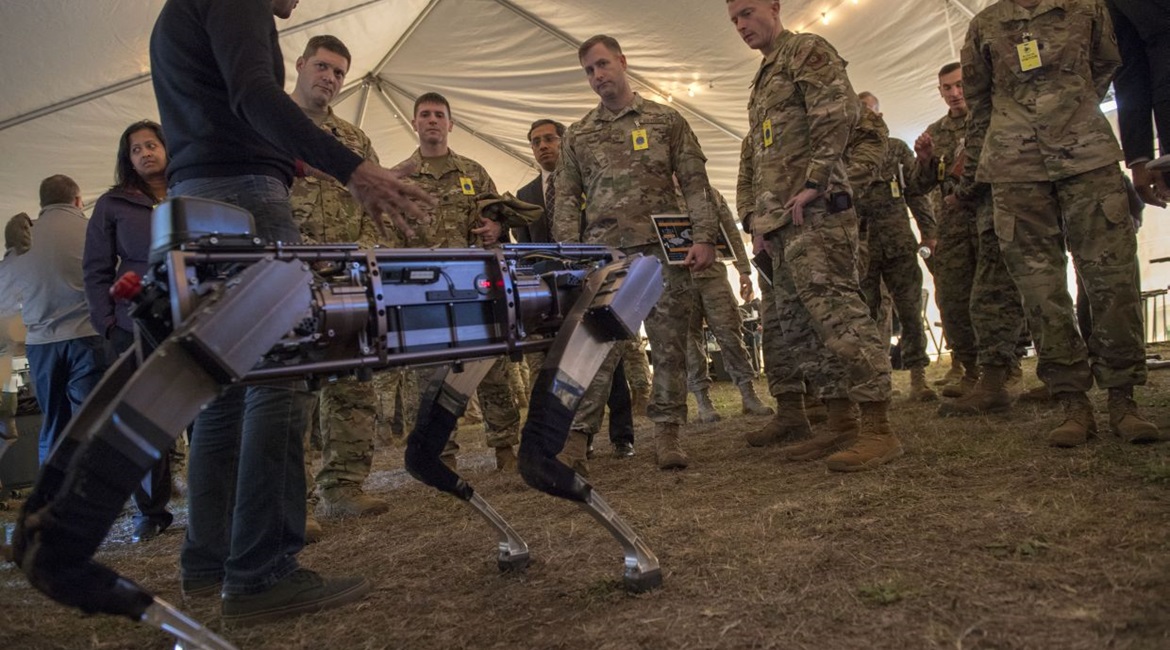
The US Air Force (USAF) on 16–18 December performed its first demonstration of the Advanced Battle Management System (ABMS) Internet-of-Things (IoT) combat concept.
The demonstration was one full day’s worth of demonstrations spread out over three days, according to Preston Dunlap, USAF chief architect, office of the assistant secretary for acquisition, technology, and logistics (AT&L). During this first demonstration, operators across the USAF, US Army, US Navy (USN), and industry tested multiple real-time data-sharing tools and technology in a homeland defence-based scenario enacted by US Northern Command (NORTHCOM) and enabled by USAF senior leaders.

Jiren Parikh (foreground), Ghost Robotics CEO, briefs USAF service members on 18 December 2019 on the capabilities of the ‘Robodogs’ during a technology showcase for the Advanced Battle Management System (ABMS) demonstration at Eglin Air Force Base in Florida. The ‘Robodogs’ are quadrupedal unmanned ground vehicles (Q-UGVs). (US Air Force)
Dunlap told reporters on 21 January at the Pentagon that NORTHCOM was chosen as the primary combatant command for the demonstration as it has many challenges trying to protect the United States. The USAF, he said, looked at a variety of threats that the command would face, such as cruise missiles, bombers, and submarines, to test ABMS to see how it could perform.
The USAF had a variety of platforms from across the Department of Defense (DoD) participate in the ABMS demonstration. These include a Lockheed Martin F-22 Raptor, an F-35A and F-35C Lightning II Joint Strike Fighter (JSF), a USN destroyer, a US Army air defence sensor and firing unit, a US Special Operations Command (USSOCOM) unit, a Lockheed Martin AC-130 gunship, and commercial space and ground sensors, according to a USAF statement.
Looking to read the full article?
Gain unlimited access to Janes news and more...




